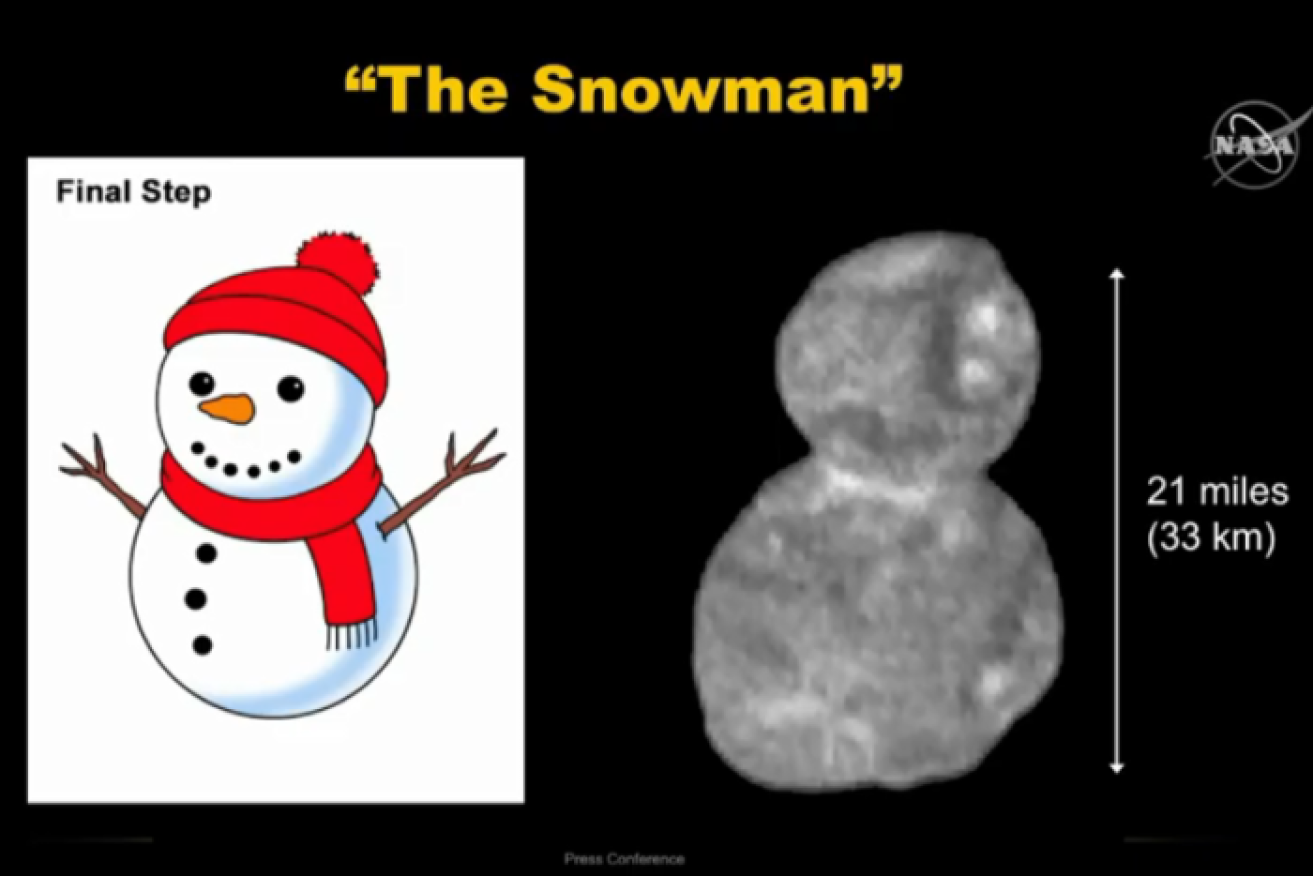NASA releases New Horizons’ image of ‘snowman’ Ultima Thule

Ultima Thule looks like a snowman says NASA. Photo: NASA
The first sharp picture of the “city-sized world” the New Horizons probe travelled 6.5 billion kilometres to explore has been unveiled, to the delight of NASA.
“We could not be happier,” New Horizons principal investigator Alan Stern said. “Let me say that bowling pin is gone – it’s a snowman, if it’s anything at all.”
An earlier image of the spinning ball of dust and ice, captured by the spacecraft from about 500,000 kilometres out, was so fuzzy and grainy Dr Stern told those gathered at the press conference it was “OK to laugh”.
In addition to providing a clearer image of the object, the new data sent back to Earth from New Horizons has revealed significant information pointing to its origins and appearance.
It has now been confirmed Ultima Thule is red in colour, “a lot like the Mordor Macula region of Pluto’s large moon, Charon,” co-investigator Carly Howett said.
The team determined its colour by combining a sharp black and white image with a less-defined, but coloured, photograph.
The team also discovered the region of Ultima Thule corresponding to the snowman’s neck is one of its brightest parts, suggesting fine grain material may have rolled there due to steep slopes and gravity.
Early exploration of its topography also suggests the two lobes – the big one called Ultima, the small one named Thule – came together so slowly that if two cars in a parking lot collided at the same speed, “you wouldn’t even fill out the insurance forms,” New Horizons’ geology and geophysics lead, Jeff Moore, said.

NASA used colour imaging to bring up detail of Ultima Thule. Photo: NASA
“We think what we’re looking at is perhaps the most primitive object that has yet been seen by any spacecraft, and may represent a class of objects which are the oldest and most primitive objects that can be seen anywhere in the present solar system,” Mr Moore said.
“I think we should think of New Horizons as a time machine, a way-back machine set to time zero, that’s brought us back to the very beginning of solar system history to the place where we can observe the most primordial building blocks of the planets.”
The project team will continue to release information about the mission in the coming days and years.
“Everything that we’re going to tell you [today] is just the tip of the iceberg,” Dr Stern said.
“We have far less than 1 per cent of the data that’s stored aboard the solid state recorders on New Horizons, already down on the ground.”
Dr Stern said the spacecraft and team’s accomplishments were “unprecedented”, essentially chasing down a “tiny little city-sized world”, in the dark at 51,000 kmh.
“It’s only really the size of something like Washington DC and it’s about as reflective as garden-variety dirt, and it’s illuminated by a sun that’s 1900 times fainter than it is outside on a sunny day here on the Earth,” he said.
It is the farthest away from the sun that any spacecraft has investigated an object.
New Horizons spent 13 years travelling to Ultima Thule’s location at the heart of the Kuiper Belt.
-ABC







